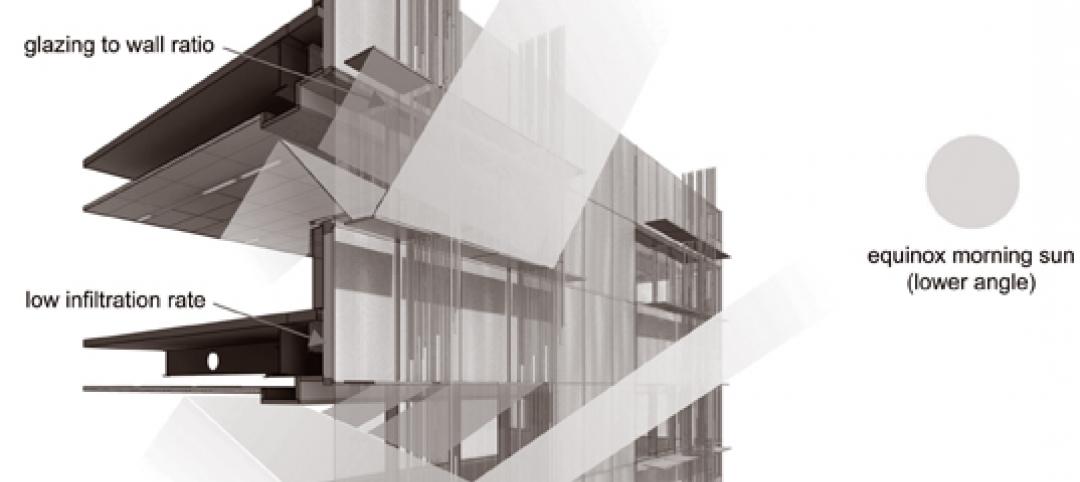As part of a push to retire the term “intern,” the Intern Development Program (IDP) will be renamed the Architectural Experience Program (AXP), effective June 29, 2016.
Developed by the National Council of Architectural Registration Boards (NCARB), the program is designed to guide aspiring architects through the early stages of their career so they can earn a license and practice architecture independently.
This decision was enacted by NCARB’s Board of Directors and is the result of over a year of research and outreach by various NCARB committees. Based on the recommendations of its Future Title Task Force, NCARB announced in May it would sunset the term “intern,” while preserving the title “architect” for licensed practitioners.
“Renaming the IDP is another step in realigning our programs to better reflect current practice and terminology,” said NCARB President Dennis Ward, AIA, NCARB. “For example, one firm may refer to a non-licensed employee as a ‘senior designer’ while another uses the title ‘project manager.’ Yet, neither is likely to introduce that individual to clients as an ‘intern.”
Since each state sets its own requirements for licensure, the program’s new name will carry an important caveat: “formerly known as the Intern Development Program, or IDP.” This language will accommodate existing laws or rules that refer to the program’s current name. Similarly, while NCARB will continue to refer to those working toward licensure as “aspiring architects” or “exam candidates,” licensing boards have the authority to prescribe their own terminology for unlicensed professionals.
The June launch of the new name will accompany the program’s realignment of experience areas. Over the next several months, NCARB will work with state licensing boards and the architectural community to implement these changes.
Click here for more information.
Related Stories
| May 10, 2012
Chapter 6 Energy Codes + Reconstructed Buildings: 2012 and Beyond
Our experts analyze the next generation of energy and green building codes and how they impact reconstruction.
| May 10, 2012
Chapter 5 LEED-EB and Green Globes CIEB: Rating Sustainable Reconstruction
Certification for existing buildings under these two rating programs has overtaken that for new construction.
| May 10, 2012
Chapter 4 Business Case for High-Performance Reconstructed Buildings
Five reconstruction projects in one city make a bottom-line case for reconstruction across the country.
| May 10, 2012
Chapter 3 How Building Technologies Contribute to Reconstruction Advances
Building Teams are employing a wide variety of components and systems in their reconstruction projects.
| May 10, 2012
Chapter 2 Exemplary High-Performance Reconstruction Projects
Several case studies show how to successfully renovate existing structures into high-performance buildings.
| May 9, 2012
Chapter 1 Reconstruction: ‘The 99% Solution’ for Energy Savings in Buildings
As a share of total construction activity reconstruction has been on the rise in the U.S. and Canada in the last few years, which creates a golden opportunity for extensive energy savings.
| May 9, 2012
International green building speaker to keynote Australia’s largest building systems trade show
Green building, sustainability consultant, green building book author Jerry Yudelson will be the keynote speaker at the Air-Conditioning, Refrigeration and Building Systems (ARBS) conference in Melbourne, Australia.
| May 9, 2012
Tishman delivers Revel six weeks early
Revel stands more than 730 feet tall, consists of over 6.3 milliont--sf of space, and is enclosed by 836,762-sf of glass.
| May 9, 2012
Stoddert Elementary School in DC wins first US DOE Green Ribbon School Award
Sustainable materials, operational efficiency, and student engagement create high-performance, healthy environment for life-long learning.
| May 9, 2012
Shepley Bulfinch given IIDA Design award for Woodruff Library?
The design challenges included creating an entry sequence to orient patrons and highlight services; establishing a sense of identity visible from the exterior; and providing a flexible extended-hours access for part of the learning commons.
















